If you’re like some people, you may have space, even an unfinished floor, in a basement level with only exterior access. In other words, you can’t get into that basement unless you go outside and walk down a hill and then enter a walk-out door down there.
Not very convenient, is it? Well, have you ever thought about engaging an Architect to design a new stairway either inside your existing house, or as an addition, to give you the convenience and functionality of interior access to get down to your Basement space? That is the subject of this online article: STAIRWAY RENOVATION – ADDITION.
There are a series of steps required to accomplish this. So let’s start those:
1. UNDERSTAND THAT YOU NEED AN ARCHITECT TO DESIGN THIS FOR YOU
You really need an Architect to do this for you. Why? Because you don’t just starting cutting floors and building stairs. Stairs are BIG. They take up lots of room and that’s
not all. There are code requirements for the width of the stairway, treads, risers, handrail, guardrails, structural issues regarding your existing house’s loads and loads imposed by the new stair, not to mention insulation, landing space and possible door that you may want to lock that gives the access to the Basement.
Nearly all clients draw a stair as about a 2′ by 5′ rectangle, when they are doodling with ideas. That’s just not going to work. To have a code-dimensioned stairway to connect a main level, down perhaps 10′ or so to a Basement Level, you are going to need about 15 risers and 14 treads. Even using near-maximums allowed by the State-modifed version of the Code, this will result in stair of at least 11′-1″ in length x 36″ clear in width. If your particular State doesn’t alter the maximum riser height, than you may very well need 16 risers and 15 treads, which means your stair may even be longer. There are all sorts of things to understand and figure out that only an Architect can do for you: for instance: the Architect may know that you intend to put down a 3/4″ thick finish wood in that unfinished Basement. Therefore, he will indicate that the bottom stair riser be 3/4″ HIGHER than all the other risers, so that when you add that Basement finish floor, everything will work out evenly. Because? Because: the IRC requires that ALL risers be identical (when finished) and that all treads be equal to each other. Do you know why? So that you won’t be as likely to trip and fall when walking on the steps. If your stair doesn’t comply with this requirement, your project could get “red-tagged” by your local building department. Which means: stopped, until corrections (usually expensive to you) are made, until your job can be resumed to completion.
And: your Basement may have ductwork and plumbing system piping that interferes with the functional (and code-required) head height when moving down a stair.
Your Architect may need to figure out how to cut your piping and/or ductwork then reconnect it, to avoid a head height problem. And there are code-required head height minimums, but guess what? If you comply with those, YOU will not be happy. Why? Because, although they meet the law, they FEEL too low. 6′-8″ clear is all the code requires and that’s really not enough to make you feel like you don’t have to duck your head when moving down the stair under the obstruction.
And the guardrail around the hole in the floor has to be a certain height, resist a certain load pressing on the top rail, and a different load pushing against the main guard area. And the elements within the guardrail are not supposed to allow passage of a 4″ sphere. Many builders and subcontractors incorrectly interpret this as meaning that the railing components can be 4″ apart. No! They must be 3-7/8″ apart maximum. This is so an infant or toddler’s head may not easily pass through the railing and then fall to their injury or death.
And the HANDrail is different from the GUARDrail. The Handrail is the part of the stair system that you grab with your hand, to stablisize yourself as you travel up and down the stair. And, the ideal height of the Handrail is different than the required height of the Guardrail. And the distance between the handrail to the clear sides of the stairway have a required dimension, per code.
And the handrail has to be “graspable,” a fact missed by many builders. In other words, you have to be able to fully reach your hand around the handrail so that you can tightly grip it, to help you avoid falling. And there is a required clearance (minimum of 1-1/2″) between the outer edge of the handrailing and the wall or other obstructions, so that you don’t pinch your fingers in a tighter area or make it impossible for you to grasp the handrail, anywhere along its entire length.
And the handrail is supposed to completely be there, for the entire length of your stair (in a commercial project, the handrail must continue at the bottom and top of the stair). And the handrail must return to the wall (so that you don’t catch your shirtsleeve in an open-ended railing or bump into it and hurt yourself (or if you are short or a child, poke an eye out). And the angle of the handrail must parallel the angle of the stairs.
And what about the side wall and bulkhead finishes and the landing door and surrounding area? And lighting? You are supposed to have a light source at the top and bottom of every stair. And how about HVAC (Heating, Ventilating and Air-Conditioning)?
Okay: do you now understand that this is a tremendous amount of complexity to comprehend? You don’t just start building this. You need to have a computerized drawing (of the sort Architects create) in order to dimension all this properly. Check it out: see below:
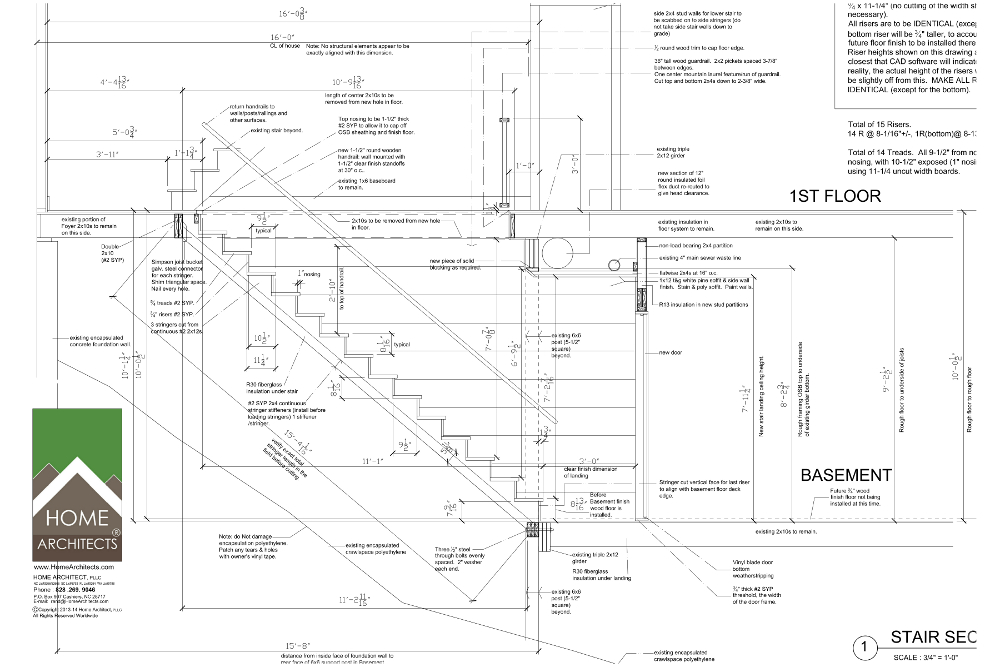
And what about the stair structure? How do you know what you can cut, what must be installed to reinforce the new stair, and what existing loads will be disturbed (perhaps dangerously) due to the new stair being installed? In other words, you need your Architect to help you avoid catastrophic structural collapse in this renovation effort. And what will the stairway structural stringers and side wall partitions bear on? If you have a crawlspace under the proposed stairway, you may not want it to continue down to the earthen crawlspace, but rather, carefully span from the main floor system down to the existing Basement floor system (assuming there is one there), without involving the crawlspace floor.
And guess what? The IRC (International Residential Code) requires that treads not be less than a certain dimension and that the risers not exceed another dimension. And you can’t exceed 12 vertical feet in a run of stairs. There are probably 30+ different variables, any one of which, if built incorrectly, could cost you dearly later, either in terms of liability or personal injury.
2. FIND A LOCATION FOR THE NEW STAIR
This is where the Architect’s advice and counsel is very valuable. He or she can spot a dead zone behind a sofa, or unused corner in a dining area or other possibility that can help you maximize your space planning. And your Architect will go downstairs and look at the existing framing and understand what they have to cut and brace and replace or add to, in order to form the hole in the floor for the new stair, and how to support the new stair itself in the most logical and simple manner possible. Your Architect will also make sure that the place for the stair will fit the required steps. Your Architect can also help you find a qualified, licensed and insured General Contractor to perform the work.
3. REORGANIZING THE STRUCTURAL ELEMENTS.
You don’t start cutting the hole in the floor yet. You have to have your Architect, Structural Engineer and Contractor take measurements of what is there in plan view and elevation/ section. Your Architect will create electronic drawings that will documents the existing conditions and the proposed plan, section and elevation features of the new stairway. #1 on the agenda for the Contractor: using the Architect and Structural Engineer’s drawings, along with in-person verification of where the floor joists and beams are that hold up the floor into which the hole will be cut. Then, the drawings should indicate what new joists and beams need to be installed BEFORE the floor hole is cut. Otherwise, things could fall down. After the floor structure is reorganized to successfully transfer the gravity loads down to the existing structural elements below (hopefully: otherwise, new structure may need to be added below as well).
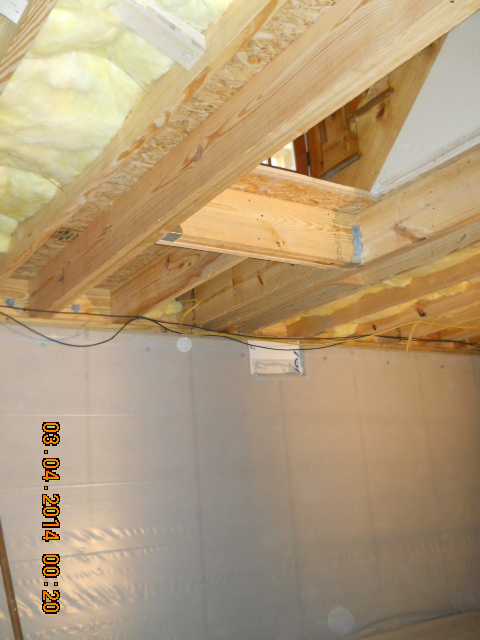
Click on the image above to see another online article from this Architect about Custom Residence Design.
.
.
4. CUTTING THE HOLE IN THE FLOOR
If this is the type of project where the stair will cut into the existing floor, that is now accomplished. Typically, the floor joists are carefully cut out, one at a time, from below and any final structural reorganization is finalized. Then, the existing finish flooring is cut out from above, usually. Now you have a structurally banded hole in your floor, ready for the stairway framing.
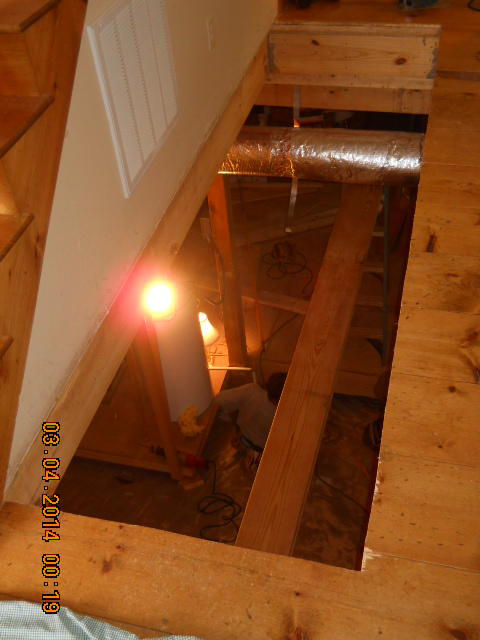
Click the photo above to see another online article about Home Renovation Architects.
.
5. STAIR STRINGERS
Assuming that you already have the required support at the bottom and the top of the stairway hole, you can now proceed to prepare & cut the stair stringers. Stringers are the floor joists that go under the new stair treads, that hold up the stair.
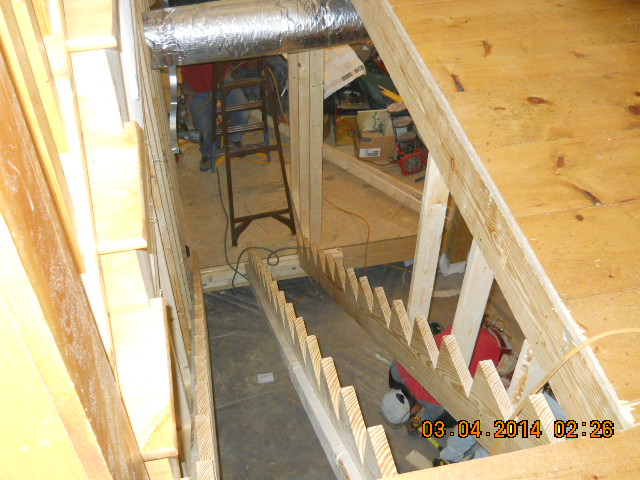
Click the image above to see another online article about home improvement Architects.
.
6. SIDE WALLS
If your stair to the Basement in going in over a crawlspace, you will have to install side partitions to insulate and finish to contain the stairway (otherwise you would be heating and cooling your crawlspace and have your house open to that). Clever carpenters know how to install blocking on the left and right side stringers to support these non-load bearing partitions.
7. REROUTING ANY CONFLICTING PLUMBING PIPING OR HVAC DUCTWORK
In this particular project, there was a 12″ round (I.D.) flexible round supply air duct that conflicted with the stair. To have left it alone would have had people running into it as they came down the stair (it was too low). So: the Architect had, in his section detail, the new location of the connecting new duct piece out of the way of the new stairway.
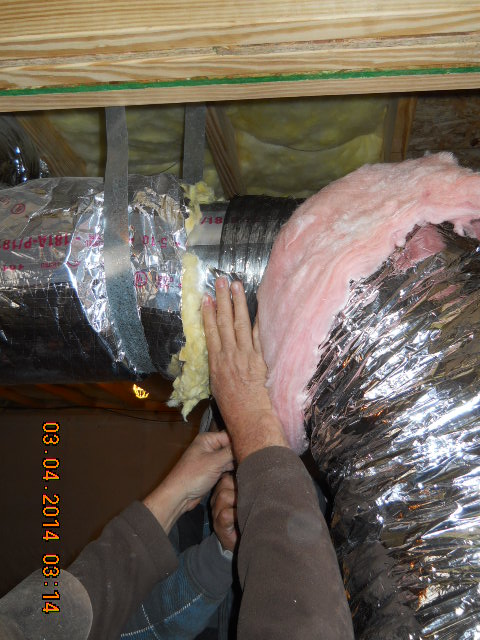
Click the image above to see another online article about special ductless HVAC residential systems.
.
8. INSULATION
You must insulate the side walls and the underside of the new stair, if it is over unheated and unair-conditioned space (like a crawlspace). It is best to do the insulation now, so that you can overlap the kraft paper vapor barrier over the interior faces of the studs. This results in much better vapor and infiltration control.
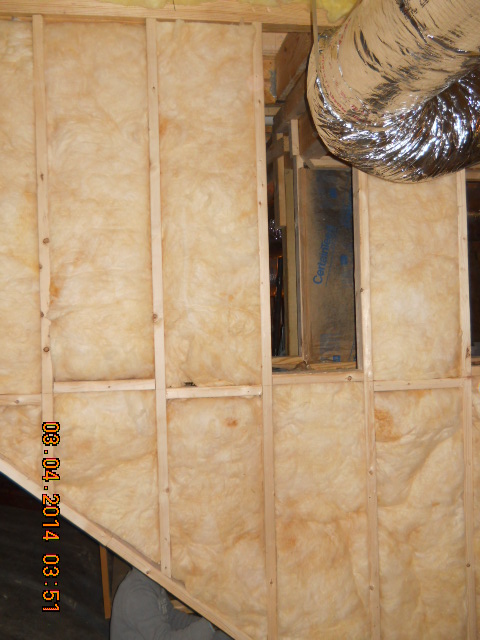
Click the photo above to see another online article about healthier insulation for houses.
.
.
9. INSTALLING THE TREADS & RISERS & SIDE WALL FINISH MATERIAL
The Contractor glued and nailed the treads to the stair stringers. The Architect (HOME ARCHITECTS ®) and the Contractor agreed to use 1-1/4″ thick bullnose 11-1/4″ boards with no cutting, other than the ends, tight to the walls. The side finish material was 1×12 ship-lapped white pine siding, nailed to the the stud infill walls. This resulted in a clean detail.
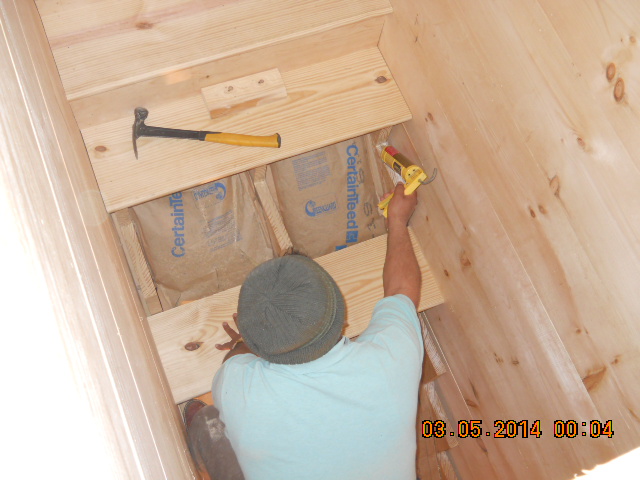
Click the photo above to see another online article about codes and residential design.
.
10. INSTALLING A GUARDRAILING AROUND THE FLOOR OPENING
You have to have a fall protection railing around the hole in the floor. In this case, 4×4 posts were installed into Simpson floor connectors, secured directly to the existing remaining finish flooring. Then, these posts where covered with 3/4″ white pine sleeves. Then the railings themselves were installed to contain the opening.
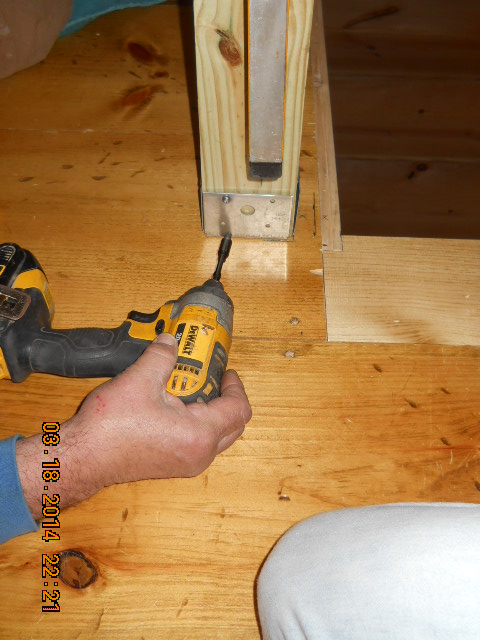
Click the image above to see another online article about How to Read an Architect’s Drawings.
.
11. HANDRAIL INSTALLATION
Next, the handrail that a person uses to hold onto while walking down the steps is installed. Special standoff hardware allows you to install the railings at the proper distance from the walls for finger clearance, but often, due to other protrusions into the stairway, you have to use additional set-off blocks.
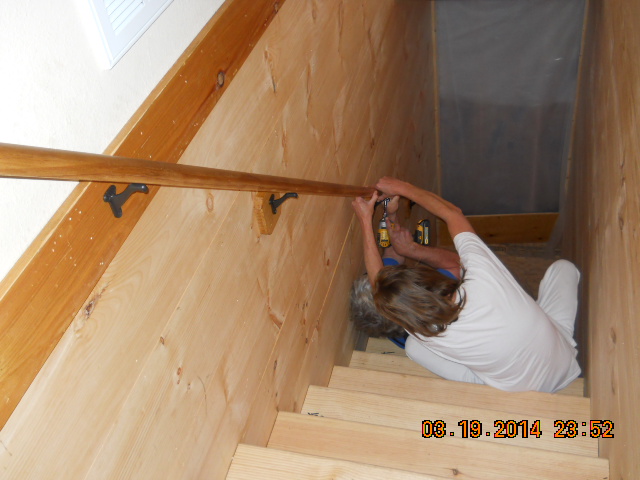
Click the image above to see another this Architect’s Project Index.
.
12. DOOR
If you want to be able to contain the air in the Basement unto itself and not have to mix that volume with the air in the main house above, you may wish to consider having a door that you can close and a nominal 3′ deep stair landing at the bottom of your steps.
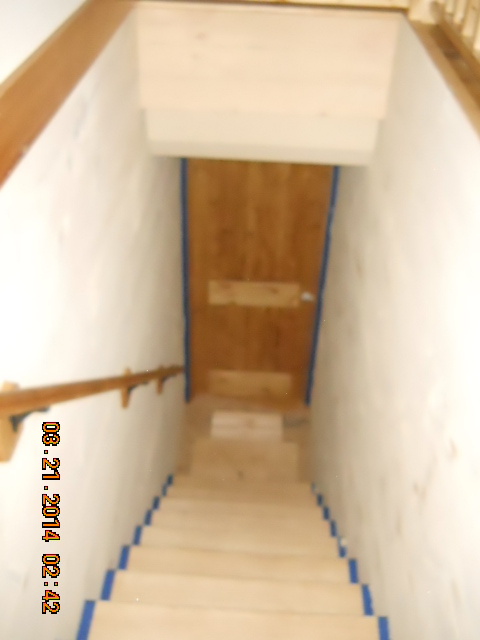
Click the image to see another entertaining article about Bunks Rooms and Barn Doors. (C)Copyright 2014, Home Architect, PLLC, All Rights Reserved Worldwide.
.
12. PAINTING AND STAINING
Depending on your finish materials, you will want to paint, stain and otherwise finish and protect your finish materials. In this example, we are using a flat paint on the wood siding, and stain on the wooden treads (covered with a clear satin varnish).
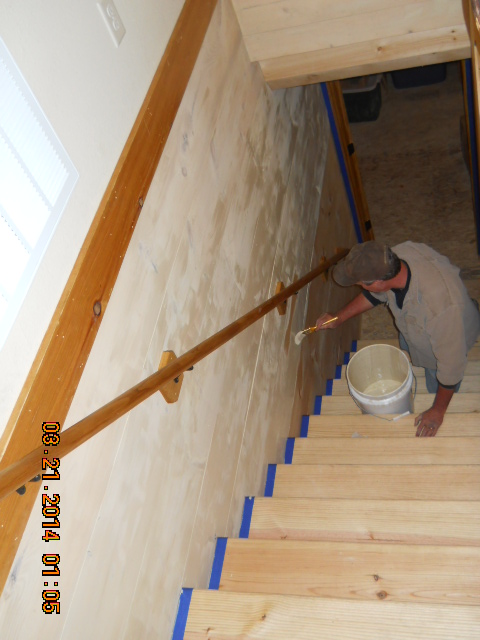
Click the image above to see another online article about how Good Residential Design Can Save Money.
.
.
Contact for stairway Architect:
rand@HomeArchitects.com
828 – 269 – 9046
HOME ARCHITECTS.COM
tags: stairway addition renovation, custom, cashiers, atlanta, hendersonville, asheville, highlands, lake toxaway, glenville, murphy, newnan
